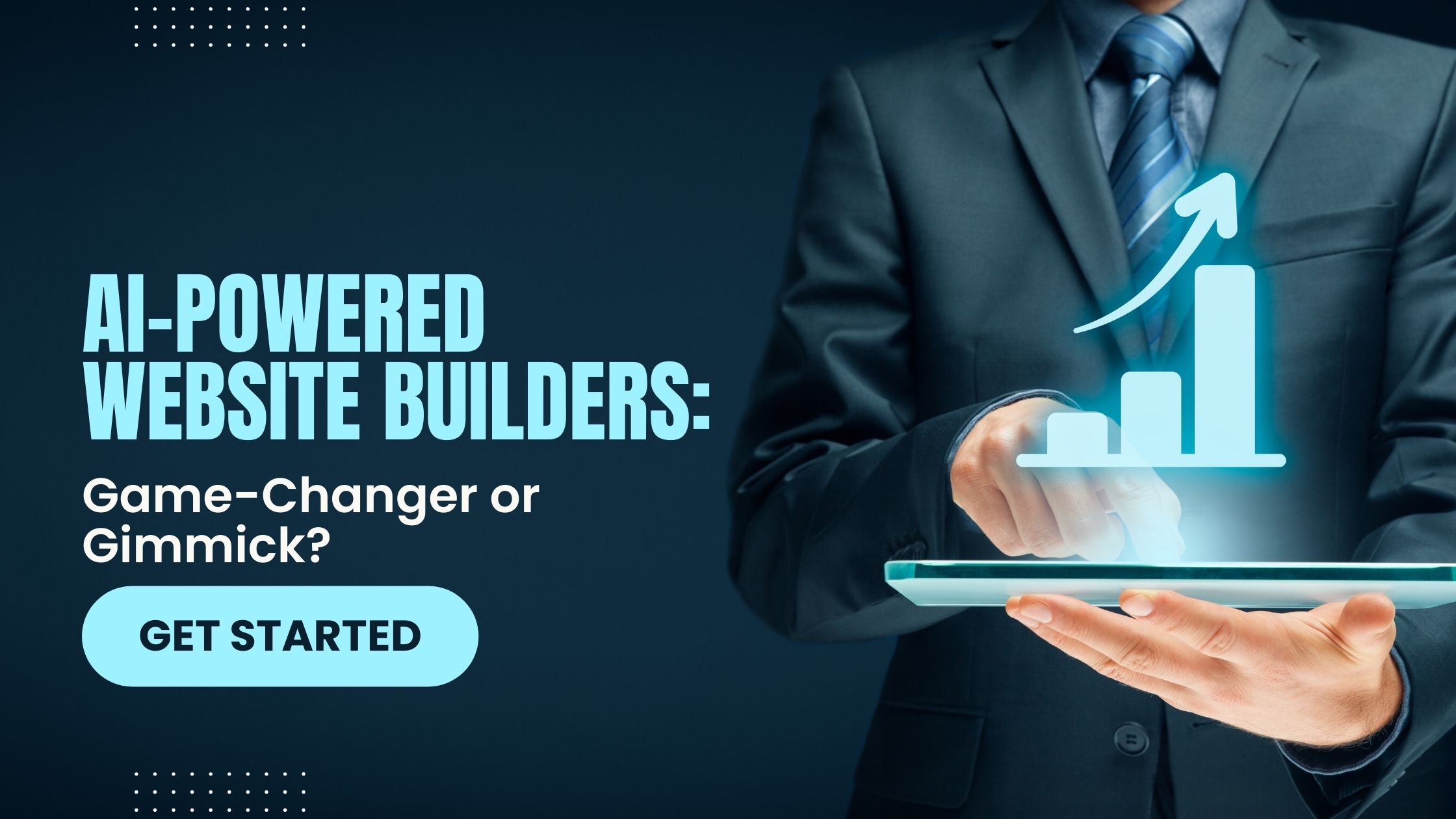AI-Powered Website Builders: Game-Changer or Gimmick?
Gone are the days when building a website required extensive coding skills or hiring a professional developer. Thanks to AI-powered website builders, creating a fully functional, visually appealing site is now easier than ever. With just a few clicks, AI can generate layouts, suggest designs, and even optimize content based on user preferences. But is this technology a game-changer or just another passing trend? In this blog post, we’ll explore the advantages, potential drawbacks, and whether AI website builders are the right choice for you.
With countless options flooding the market, it’s essential to understand what makes AI-powered website builders tick and whether they can deliver on their promises. Let’s dive into this fascinating world where technology meets creativity, uncovering both the strengths and weaknesses of these cutting-edge platforms.
How Do They Work?
AI-powered website builders utilize machine learning algorithms to simplify the design process. They analyze user preferences and industry trends, adapting layouts and content accordingly.
When a user inputs basic information about their business, the AI generates various templates tailored to that specific niche. It can suggest color schemes, fonts, and even images that resonate with target audiences.
Natural language processing enables these tools to understand commands in plain English. This allows users without technical skills to create professional-looking sites effortlessly.
The more data these platforms gather from users, the smarter they become. Over time, they learn what works best for different types of websites and continuously improve their recommendations.
This seamless integration of technology makes web development accessible for everyone—from small businesses to aspiring entrepreneurs looking for an online presence without breaking the bank or needing extensive coding knowledge.
Advantages of AI-powered Website Builders
AI-powered website builders offer a plethora of advantages that can transform the way individuals and businesses create their online presence. One major benefit is speed. These platforms can generate a fully functional website in minutes, saving users countless hours.
Customization is another strong suit. AI algorithms analyze user preferences and industry trends to suggest layouts, colors, and content tailored specifically for each project.
Furthermore, these tools often come equipped with SEO features built right in. This means better visibility on search engines without needing extensive knowledge of optimization techniques.
Accessibility also plays a key role. With drag-and-drop interfaces and intuitive designs, even those with minimal technical skills can craft professional-looking websites effortlessly.
Cost-effectiveness should not be overlooked either; many AI-powered solutions offer competitive pricing compared to hiring web developers or designers.
Disadvantages of AI-powered Website Builders
AI-powered website builders come with their share of disadvantages.
One major concern is the lack of customization. While these tools offer templates, they often limit creative freedom. Users may find it challenging to achieve a unique look for their websites that stands out from competitors.
Another issue lies in dependency on technology. If an AI platform experiences technical difficulties or goes offline, your website could be inaccessible. Relying solely on automated systems can be risky for business continuity.
Cost can also become a factor over time. Initial pricing may seem attractive, but hidden fees for additional features might accumulate quickly.
Moreover, SEO capabilities are sometimes basic and not tailored to specific needs. As search engine algorithms evolve, relying heavily on AI’s suggestions may hinder optimal performance in search rankings.
Some users miss the personal touch that comes with hiring a human designer who understands nuanced brand storytelling and aesthetics.
Real-life Examples of Successful AI-powered Websites
Several businesses have successfully harnessed the power of AI-driven website builders. One shining example is Wix, which uses artificial intelligence in its Wix ADI (Artificial Design Intelligence) feature. This tool designs customized websites based on user preferences and content input.
Another standout is Bookmark, renowned for its AIDA (Artificial Intelligence Design Assistant). AIDA generates fully functional websites in mere minutes by asking users a series of questions about their needs.
Then there’s Zyro, which combines powerful AI tools with beautiful templates to help entrepreneurs create stunning sites effortlessly. Its AI logo maker and content generator add layers of convenience while maintaining quality.
These examples illustrate how diverse industries are utilizing AI-powered website builders to simplify web design and enhance online presence. Each platform brings unique features that cater specifically to different business needs and aesthetics.
Human vs AI: Which is Better for Website Building?
When comparing human designers to AI-powered website builders, several factors come into play. Human creativity thrives on intuition and emotion. Designers can capture the essence of a brand in ways that machines may struggle to replicate.
On the other hand, AI excels at speed and efficiency. It can analyze vast amounts of data instantly, providing insights that would take a human hours or days to gather. This capability allows for rapid iterations and adjustments based on user preferences.
Collaboration is another essential aspect. A human designer often works closely with clients, understanding nuances that an algorithm might miss. Yet, AI tools offer users control over design processes without needing extensive technical skills.
It’s not about choosing one over the other but finding a balance between human ingenuity and technological prowess. Each has its strengths that can complement the other effectively in creating stunning websites.
The Future of AI in Web Design and Development
The future of AI in web design and development is poised to transform the industry dramatically. As technology advances, we can expect smarter algorithms that not only assist with layout and aesthetics but also adapt based on user behavior.
Imagine a website that evolves over time, learning from visitor interactions to enhance user experience continually. This level of personalization could redefine how businesses engage with their audience.
Moreover, AI-driven tools will likely streamline workflow for designers and developers. Tasks like coding or image optimization may become automated, allowing creative professionals to focus on strategic thinking rather than mundane tasks.
Collaboration between human creativity and machine intelligence will foster innovation. The blend of artistic vision with data analytics could lead to more effective designs that resonate deeply with users.
As these technologies mature, accessibility improvements are likely as well. Building sites tailored for diverse audiences might become easier than ever before.
Conclusion:
The rise of AI-powered website builders has sparked a significant debate in the web design community. On one hand, these tools offer unprecedented convenience and speed. They allow users to create websites without extensive coding knowledge or design experience. The automation and smart suggestions enhance creativity while streamlining the development process.
However, there are concerns about quality and customization. Many users find it challenging to achieve a truly unique look when relying on templates generated by algorithms. Additionally, reliance on AI can lead to a lack of personal touch that often defines successful brands.
As technology continues to evolve, so will the capabilities of these builders. What seems like just another trend today may pave the way for more sophisticated solutions tomorrow. Those who embrace this innovation could reap substantial benefits if they balance automation with their creative insights.
Whether AI-powered website builders are transformative tools or mere gimmicks comes down to how individuals choose to use them in their projects. Each approach carries its own advantages and disadvantages, leaving plenty of room for discussion among web developers and entrepreneurs alike.



